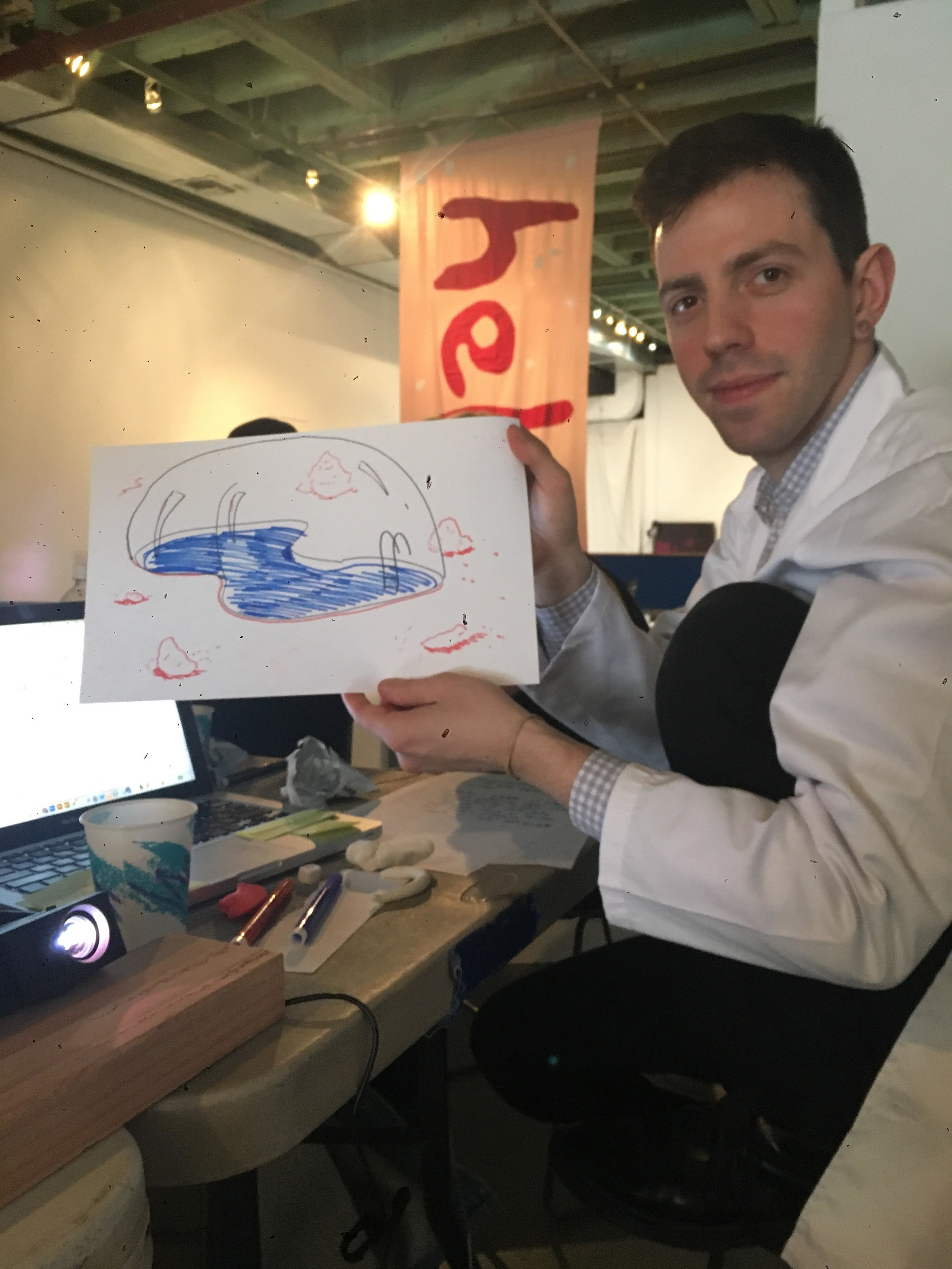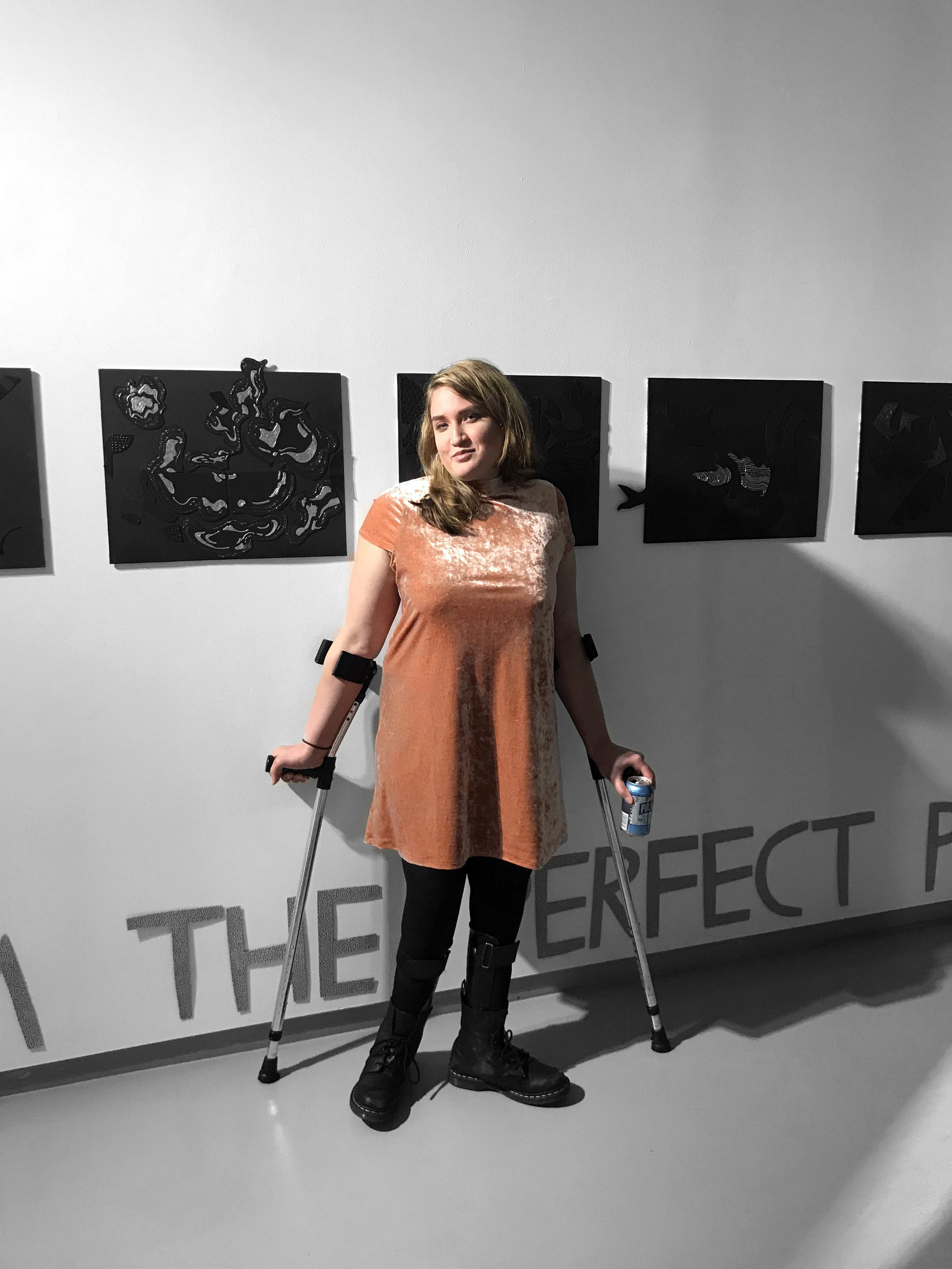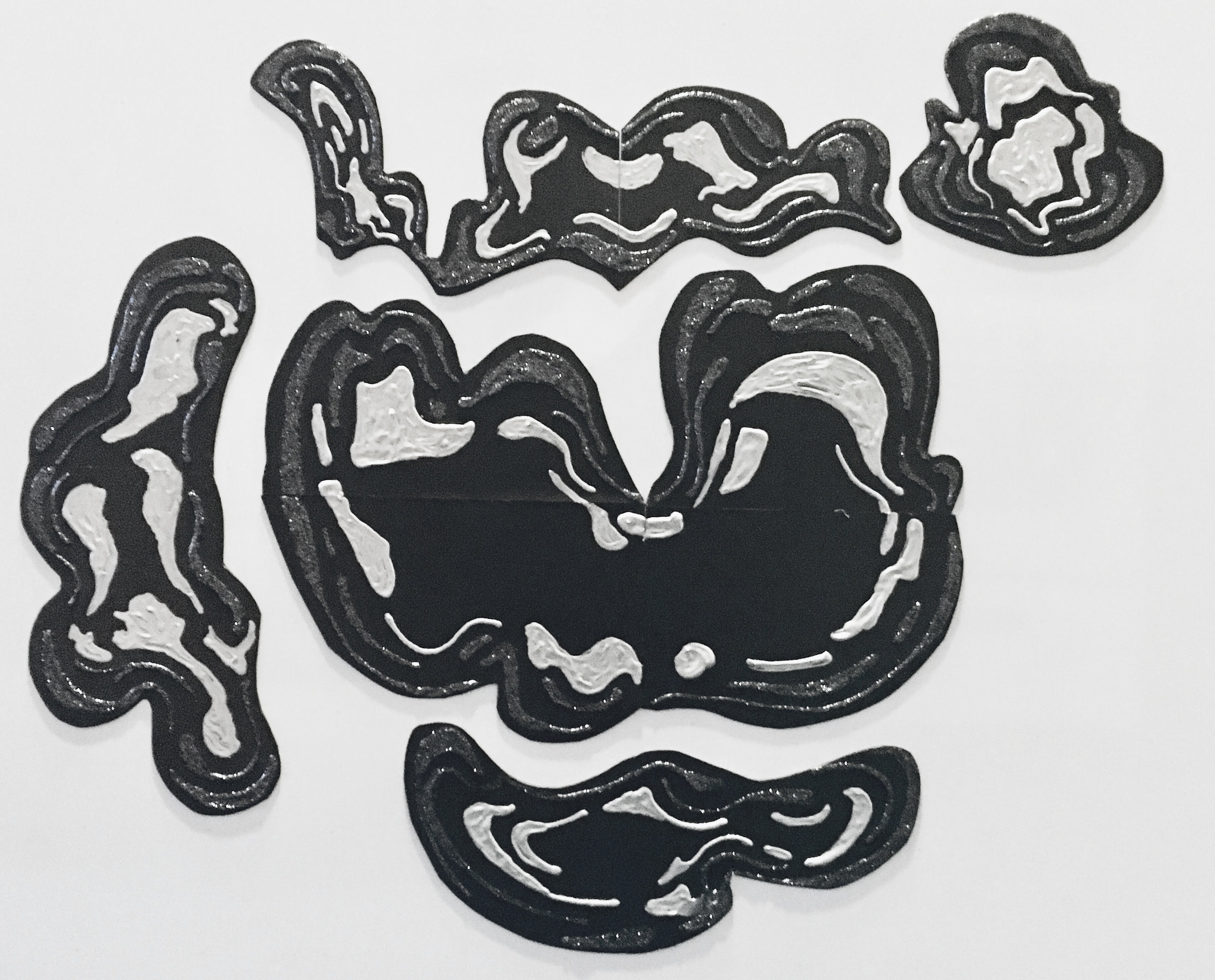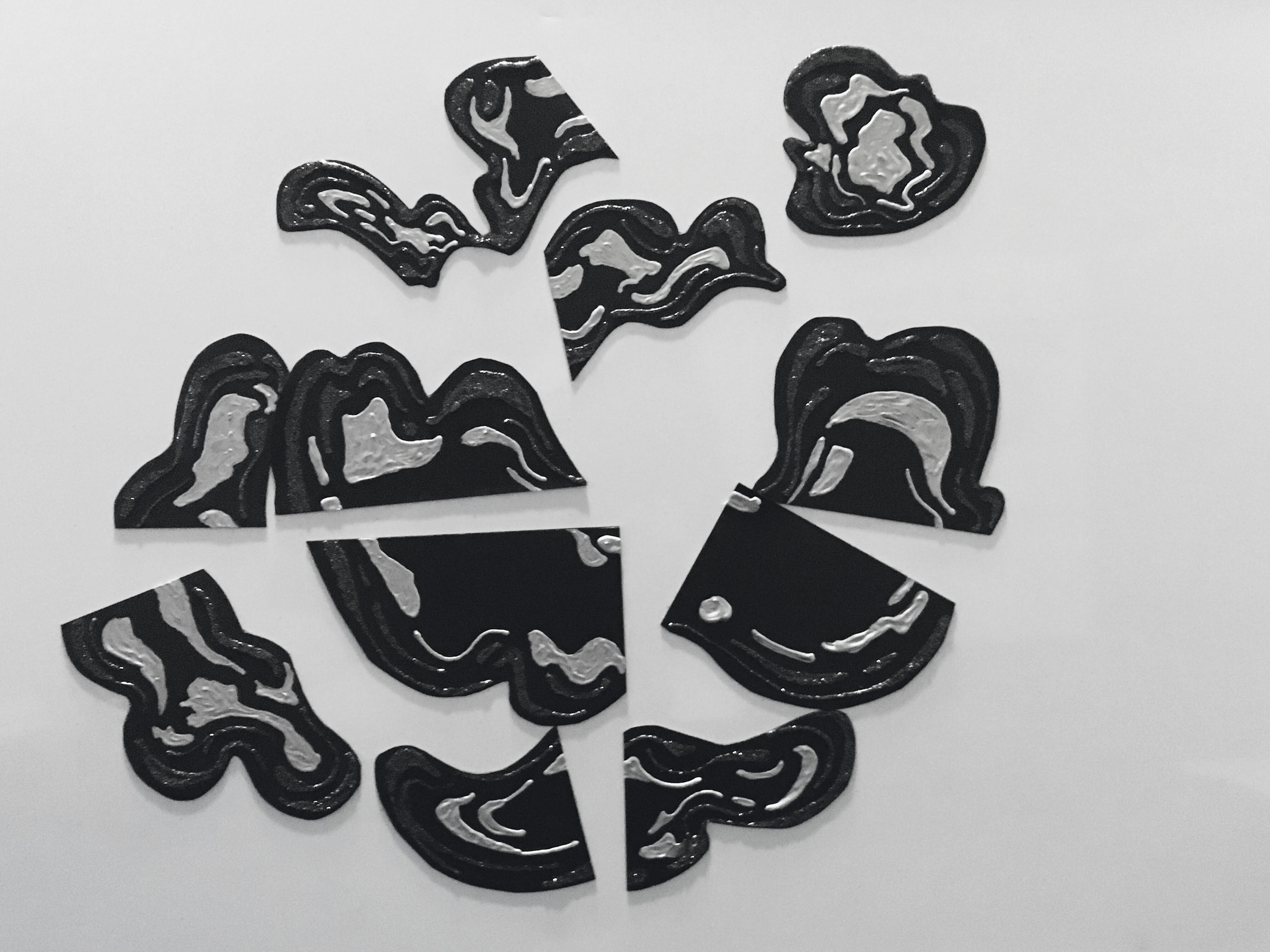Q&A: Madison Zalopany
July 11, 2019 | By Rafael Soldi
Madison Zalopany is an artist investigating disability innovation in her art-making practice. Through collaboration, experimentation, and a lot of failure, she seeks to answer the question: What is possible conceptually and aesthetically when disability is centered as an opportunity rather than a deficit? Through an interdisciplinary practice Zalopany's work can be best summarized as an invitation to rethink or re-imagine ableist norms in cultural spaces.
Madison Zalopany identifies as and disabled artist and activist. She currently lives in Kansas City, MO and works as the Manger of Access and Community Programs at the Nelson-Atkins Museum. She received her BFA in painting from the Maryland Institute College of Art in 2011.
Rafael Soldi: Hi Madison, thanks for chatting with us.
Madison Zalopany: Thank you so much, I am happy to chat with you!
RS: Tell us a little a about your path from art school to your current position advocating for disability justice.
MZ: I went for my BFA at the Maryland Institute College of Art (MICA) in Baltimore, where I had joined the Community Arts Partnership (CAP). During my time at CAP I had worked with some amazing community organizations and really fell in love with arts education and community organizing.
After I had graduated from MICA, I moved to Chicago with a job offer at a small non-profit as a freelance art-teacher. About two weeks after I was hired, I had received a call from the non-profit asking me to disclose information about my disability. I did sense something was wrong at the time, but they had already hired me so I answered their questions. Later that day I had received an email describing my disability as a “problem” and explaining I wasn’t a good fit for the position.
I can’t say I was shocked, there had been many times I suspected being passed over for opportunities because of the way I look or the way I move in the world; but this was the first time it was explicit. Unfortunately, it would not be the last.
I, naively, decided to move to Chicago anyway and really struggled with job discrimination. Granted, this was also during the recession, but about half of the job interviews cited my disability as a reason I was ineligible for the position. Jobs that were certainly within my skillset were moved far out of reach due to disability stigma.
Simultaneously to my fruitless job search, I also was dealing with physical inaccessibility. Chicago was the first city I had lived in where I was dependent on public transportation, transportation that was largely inaccessible to me and other people with disabilities.
So I was broke, living on social security, trying to cobble together odd freelance work, and destroying my body going up and down the CTA stairs. It was from these experiences that my understanding of disability shifted. Even growing up disabled, I had always thought of my disability in terms of my body; and the limitations I had felt were rooted in that body. But those deep rooted beliefs that I now come to know as internalized stigma, became challenged the more I thought critically about how the barriers I was facing were mostly external. It was ableism built into the environment and social attitudes of others.
My new perspective was embraced, supported, and nurtured the more I read disability theory and became involved in the disability community. And so I felt oddly placed between two worlds: art education and disability justice.
At 26 I decided to shift gears and apply for an internship in the Whitney’s Access and Community Programs department. I felt a little ashamed to be moving backwards and going back to unpaid work, but honestly the choice was life changing. I was lucky enough to be accepted into the internship program and almost instantly felt like I had found where I had belonged. After my internship I was hired as an assistant and a year later I was promoted to coordinator. I mention this because I think a lot of times in life, especially if you have grown up with a disability, you feel delayed. There are a number of things, big or small, that you miss out of. And so there is this feeling, at least for me, where if you are not keeping up with your non-disabled peers, you are failing. And it’s ironic that when I let go of the idea of “keeping up” with non-disabled peers was when I was really able to grow into my own.
RS: What does your role entail at the Whitney Museum of American Art?
MZ: The Access and Community Programs team falls under the umbrella of the Education department; however we collaborate with every department of the institution. Our larger goals are to think about how to break down barriers to the museum; physical, financial, and social barriers. Sometimes it’s thinking through policy changes, making building modifications, or conducting staff trainings. We then create programs that seek to actively invited communities that have historically been marginalized or outright excluded. We collaborate on these programs with our community partners across the city.
RS: On the surface, we tend to understand disability justice as simply accessibility—a service. But it goes well beyond that—in the context of the art world and art institutions, what does disability justice look like?
MZ: That is true. Accessibility is often more compliance focus. It asks the question, how can we fit the disability community into our world? It sometimes is very assimilative or homogenous feeling. Disability justice asks the question, why does it have to be that way at all? What else is there?
Accessibility is the cold (often uninspiring) medicalized equipment that normalizes our bodies (with positive and negative outcomes). Disability justice can celebrate natural variation, encourage innovation, and foster interdependency.
The art world and cultural institutions have just begun to scratch the surface. Historically speaking, a lot of disabled artists and disability aesthetics had be labelled “outsider art” or craft. Labels that implied the work either lacked skill or conceptual intent. And yet, many of the aesthetics of both of these genres can be found in many celebrated bodies of works by non-disabled artists.
RS: What are some of the initiatives and projects you’ve been most proud of? What is an area you feel continues to be a huge hurdle for institutions?
MZ: I’m most proud of how our program area has expanded on what access programming can be. There is a tendency for access programs to be deficit focused; it looks at all the ways a person cannot participate and creates siloed programs to accommodate particular “impairments”. Essentially, these programs are subsidizing inequities, but, in my opinion, not reaching equity. Non-disabled audiences have choice when it comes to their programming. For example, an English speaking non-disabled person has the privilege to come to the museum at any time and there are multiple tours throughout the day that they might join. For the disability community, there may only be one public tour available per month that is accessible to them.
With so few choices, our access programs were consistently at capacity. Yet, despite our disability-specific programming being completely full, we were not seeing disabled audiences attending public programming outside of the Access department. So we had to ask ourselves, what is inviting audiences with disabilities into specific programs and what is preventing them from attending others?
We found there was a simple answer: Information. All of our Access programs automatically provided accommodations. People knew they could just show up to the program and we would be welcoming and accommodating. So we began to include access information on every event page. Would there be accessible seating? Are we providing ASL interpretation? Is there audio description? If yes, we featured it on the page and promotional materials. If no, we included contact information where people could request additional accommodations. Of course, accommodation by request is never ideal, but it at least signaled we are thinking about disabled audiences and that we want them to visit our museum.
This small change allowed us to increase the number of access programming available, without actually adding additional programs. And it also worked. More people with disabilities were attending programs once they trusted they could have their needs and preferences met.
But what I’m most proud of is how we really centered disabled artists and artistry at the heart of all of our programming.
RS: Coming back to art-making, there’s a question of who’s job is it to make art accessible—is it an institution’s job? Or should all artists be thinking about how they make their work accessible to others?
RS: Access has to be socialized. It has to live in the bodies and actions of everyone to truly exist. Otherwise it is just checklists and performative compliance. The artist, the institution, and honestly even the audience needs to provide access to one another.
Something I also like to point out is institution and artists already do this for “dominant” populations. For example, (in America) it’s almost always expected that a video in any language other than English will include subtitles. This provides access for the perceived “dominant majority”. However, artists and institutions will often refuse to put captions on their videos for people who are D/deaf or hard of hearing. We have to look at the choices we make and for whom.
RS: What is one misconception about disability justice / accessibility that you encounter the most?
MZ: There are a lot of misconceptions, but I would say one of my biggest pet peeves is the idea that because an organization or individual is not able to make something 100% accessible then it isn’t worthwhile to make any steps towards accessibility. There are so many small things you can do as an individual or institution. Yes, make a five-year plan for some of those larger projects, but do not forget about that low-hanging fruit. There are things you can do right now for zero money!
Not sure where to start? Invite the disability community in. Build relationships. Pay people appropriately for their labor. Disability justice is not guessing what people need or referring to compliance checklists. It’s reimagining the space and culture to center disability.
RS: Not unlike other minorities, disabled artists are not only expected to teach others about disability justice, but are often expected to make work about their disability. Would you agree?
MZ: Yes! I absolutely agree. I appreciate people wanting to learn, but first do some of the preliminary work.
Also, while I believe that my perspective as an artist is always influenced by my identity as a disabled woman, I am not obligated to make work about my specific disability. Art can be complex and hold space for multiple conversations even when it embodies my own particular disability aesthetic.
RS: Disability as an identity is becoming more visible. What kind of efforts are out there to bring to light conversations around disability aesthetics and art practices? Are these conversations reaching curators?
MZ: There are so many amazing disabled artists and activists who are currently doing the work and have been doing the work. Alice Sheppard, Simi Linton, Cyree Jarelle Johnson, Carolyn Lazard, Park McArthur, Shannon Finnegan, Kevin Gotkin, and so many more. And yes, it is reaching curators and has reached curators; except now curators and other cultural workers have the know how to recognize and talk about disability aesthetics. And that’s largely due to disabled artists teaching cultural workers the skills to do so.
RS: Has your art practice changed as a result of your activism? If so, how?
MZ: You could definitely say that, but I think it may be more accurate to say my practice as changed because of the people I have met in the disability community. I have the benefit of learning and engaging with so many brilliant, creative, and fearless individuals.
RS: What projects do you have coming up that you’re really excited about?
My long time friend, Alex Zak, and I just launched our firsts workshop of People for an Accessible Mars. People for an Accessible Mars (PAM) is a (fake) non-profit that seeks to instrumentalize the expertise of the disability community and collect data on accessible space travel and terraform methods. Through a series of workshops, surveys, and focus groups; we intend to advise NASA and all mars exploration initiatives on how to build an accessible future. The intention is to build access into the architecture of everything we do. To be intentional about building an inclusive society, rather than retrofitting access at a later date. Also, it’s an opportunity of talking about the Mars One mission as modern day eugenics.





